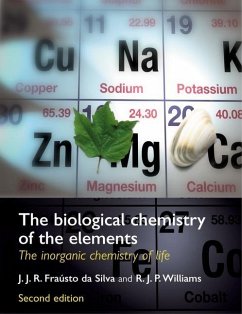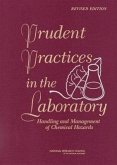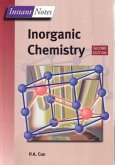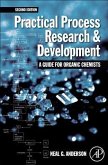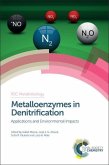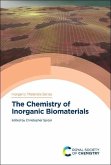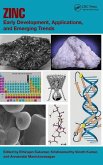J. J. R. Frausto da Silva (, Professor of Analytical Chemistry, Ins, R. J. P. Williams (, Emeritus Professor of Chemistry, University of
Biolog Chem Element P
J. J. R. Frausto da Silva (, Professor of Analytical Chemistry, Ins, R. J. P. Williams (, Emeritus Professor of Chemistry, University of
Biolog Chem Element P
- Broschiertes Buch
- Merkliste
- Auf die Merkliste
- Bewerten Bewerten
- Teilen
- Produkt teilen
- Produkterinnerung
- Produkterinnerung
This text describes the functional role of the twenty inorganic elements essential to life in living organisms.
Andere Kunden interessierten sich auch für
![The 13th Element The 13th Element]() John EmsleyThe 13th Element18,99 €
John EmsleyThe 13th Element18,99 €![Prudent Practices in the Laboratory Prudent Practices in the Laboratory]() National Research CouncilPrudent Practices in the Laboratory111,99 €
National Research CouncilPrudent Practices in the Laboratory111,99 €![BIOS Instant Notes in Inorganic Chemistry BIOS Instant Notes in Inorganic Chemistry]() Tony CoxBIOS Instant Notes in Inorganic Chemistry40,99 €
Tony CoxBIOS Instant Notes in Inorganic Chemistry40,99 €![Practical Process Research and Development - A Guide for Organic Chemists Practical Process Research and Development - A Guide for Organic Chemists]() Neal G. AndersonPractical Process Research and Development - A Guide for Organic Chemists135,99 €
Neal G. AndersonPractical Process Research and Development - A Guide for Organic Chemists135,99 €![Metalloenzymes in Denitrification Metalloenzymes in Denitrification]() Metalloenzymes in Denitrification262,99 €
Metalloenzymes in Denitrification262,99 €![Chemistry of Inorganic Biomaterials Chemistry of Inorganic Biomaterials]() Chemistry of Inorganic Biomaterials147,99 €
Chemistry of Inorganic Biomaterials147,99 €![Zinc Zinc]() Zinc126,99 €
Zinc126,99 €-
-
-
This text describes the functional role of the twenty inorganic elements essential to life in living organisms.
Hinweis: Dieser Artikel kann nur an eine deutsche Lieferadresse ausgeliefert werden.
Hinweis: Dieser Artikel kann nur an eine deutsche Lieferadresse ausgeliefert werden.
Produktdetails
- Produktdetails
- Verlag: Oxford University Press
- 2 Revised edition
- Seitenzahl: 600
- Erscheinungstermin: 1. November 2001
- Englisch
- Abmessung: 246mm x 189mm x 33mm
- Gewicht: 1086g
- ISBN-13: 9780198508489
- ISBN-10: 0198508484
- Artikelnr.: 21143302
- Herstellerkennzeichnung
- Libri GmbH
- Europaallee 1
- 36244 Bad Hersfeld
- gpsr@libri.de
- Verlag: Oxford University Press
- 2 Revised edition
- Seitenzahl: 600
- Erscheinungstermin: 1. November 2001
- Englisch
- Abmessung: 246mm x 189mm x 33mm
- Gewicht: 1086g
- ISBN-13: 9780198508489
- ISBN-10: 0198508484
- Artikelnr.: 21143302
- Herstellerkennzeichnung
- Libri GmbH
- Europaallee 1
- 36244 Bad Hersfeld
- gpsr@libri.de
* The chemical and physical factors controlling the elements of life
* 2: The principles of the uptake and chemical speciation of the
elements in biology
* 3: Physical separations of elements: compartments and zones in
biology
* 4: Kinetic considerations of chemiscal reactions, catalysis, and
control
* 5: Energy in biological systems and hydrogen biochemistry
* 6: The role of biological macromolecules and polymers
* 7: The functional value of the chemical elements in biological
systems
* The roles of individual elements in biology
* 9: The biological chemistry of magnesium: phosphate metabolism
* 10: Calcium: controls and triggers
* 11: Zinc: Lewis acid catalysis and regulation
* 12: Non-haem iron: redox reactions and controls
* 13: Haen iron: coupled redox reactions
* 14: Manganese: dioxygen evolution and glycosylation
* 15: Copper: extracytoplasmic oxidases and matrix formation
* 16: Nickel and cobalt: remnants of early life
* 17: Molybdenum, tungsten, vanadium, and chromium
* 18: Phosphate, silica, and chloride: acid-base non-metals
* 19: Sulphur, selenium, and the halogens: redox non-metals
* 20: Integrated living systems of elements
* 2: The principles of the uptake and chemical speciation of the
elements in biology
* 3: Physical separations of elements: compartments and zones in
biology
* 4: Kinetic considerations of chemiscal reactions, catalysis, and
control
* 5: Energy in biological systems and hydrogen biochemistry
* 6: The role of biological macromolecules and polymers
* 7: The functional value of the chemical elements in biological
systems
* The roles of individual elements in biology
* 9: The biological chemistry of magnesium: phosphate metabolism
* 10: Calcium: controls and triggers
* 11: Zinc: Lewis acid catalysis and regulation
* 12: Non-haem iron: redox reactions and controls
* 13: Haen iron: coupled redox reactions
* 14: Manganese: dioxygen evolution and glycosylation
* 15: Copper: extracytoplasmic oxidases and matrix formation
* 16: Nickel and cobalt: remnants of early life
* 17: Molybdenum, tungsten, vanadium, and chromium
* 18: Phosphate, silica, and chloride: acid-base non-metals
* 19: Sulphur, selenium, and the halogens: redox non-metals
* 20: Integrated living systems of elements
* The chemical and physical factors controlling the elements of life
* 2: The principles of the uptake and chemical speciation of the
elements in biology
* 3: Physical separations of elements: compartments and zones in
biology
* 4: Kinetic considerations of chemiscal reactions, catalysis, and
control
* 5: Energy in biological systems and hydrogen biochemistry
* 6: The role of biological macromolecules and polymers
* 7: The functional value of the chemical elements in biological
systems
* The roles of individual elements in biology
* 9: The biological chemistry of magnesium: phosphate metabolism
* 10: Calcium: controls and triggers
* 11: Zinc: Lewis acid catalysis and regulation
* 12: Non-haem iron: redox reactions and controls
* 13: Haen iron: coupled redox reactions
* 14: Manganese: dioxygen evolution and glycosylation
* 15: Copper: extracytoplasmic oxidases and matrix formation
* 16: Nickel and cobalt: remnants of early life
* 17: Molybdenum, tungsten, vanadium, and chromium
* 18: Phosphate, silica, and chloride: acid-base non-metals
* 19: Sulphur, selenium, and the halogens: redox non-metals
* 20: Integrated living systems of elements
* 2: The principles of the uptake and chemical speciation of the
elements in biology
* 3: Physical separations of elements: compartments and zones in
biology
* 4: Kinetic considerations of chemiscal reactions, catalysis, and
control
* 5: Energy in biological systems and hydrogen biochemistry
* 6: The role of biological macromolecules and polymers
* 7: The functional value of the chemical elements in biological
systems
* The roles of individual elements in biology
* 9: The biological chemistry of magnesium: phosphate metabolism
* 10: Calcium: controls and triggers
* 11: Zinc: Lewis acid catalysis and regulation
* 12: Non-haem iron: redox reactions and controls
* 13: Haen iron: coupled redox reactions
* 14: Manganese: dioxygen evolution and glycosylation
* 15: Copper: extracytoplasmic oxidases and matrix formation
* 16: Nickel and cobalt: remnants of early life
* 17: Molybdenum, tungsten, vanadium, and chromium
* 18: Phosphate, silica, and chloride: acid-base non-metals
* 19: Sulphur, selenium, and the halogens: redox non-metals
* 20: Integrated living systems of elements

